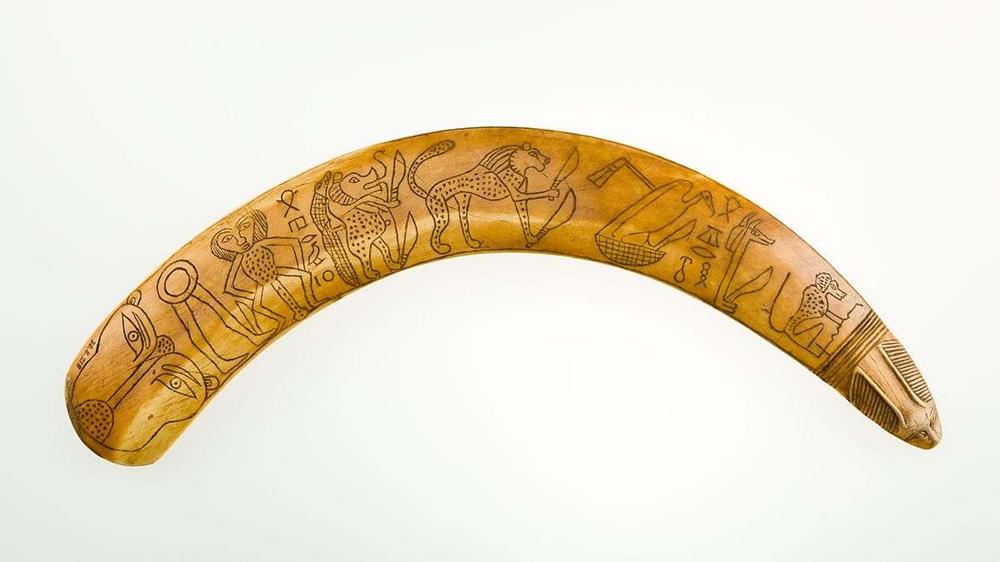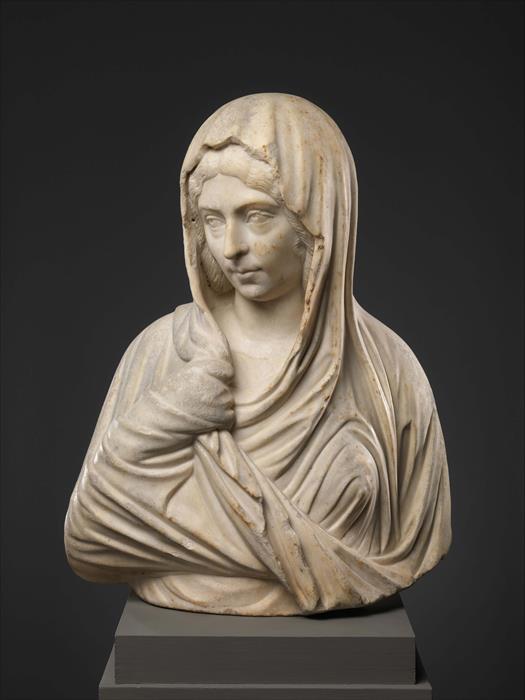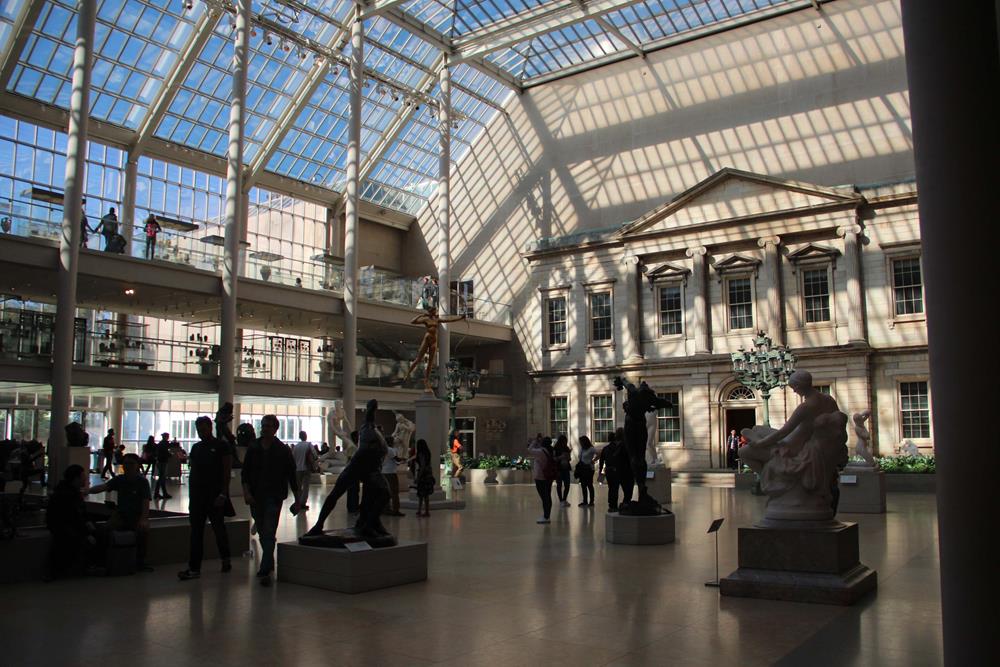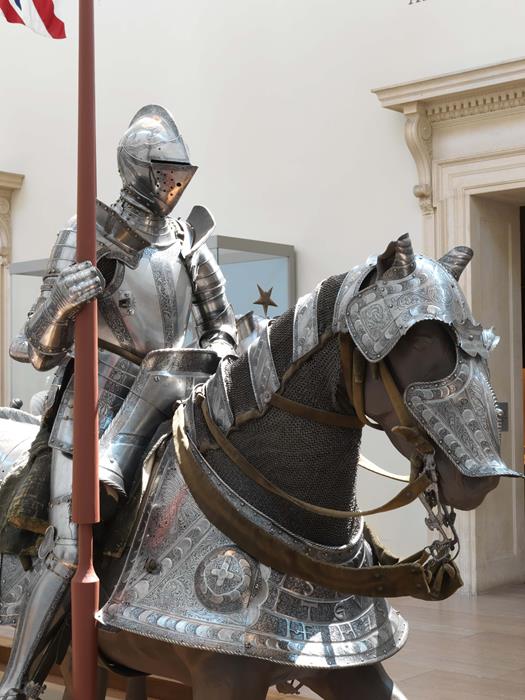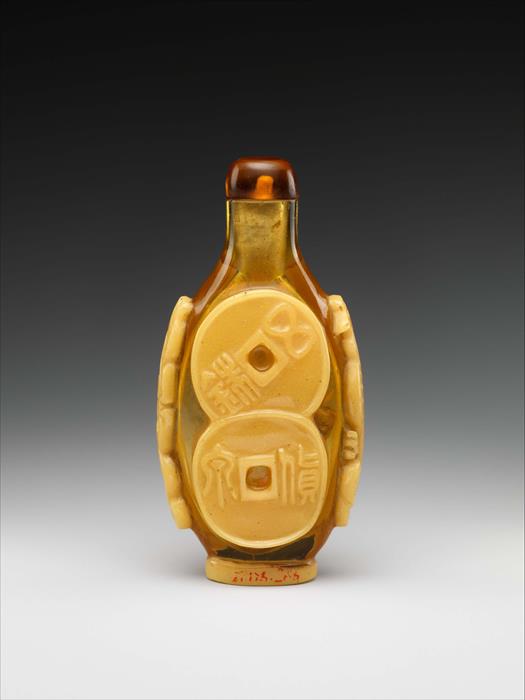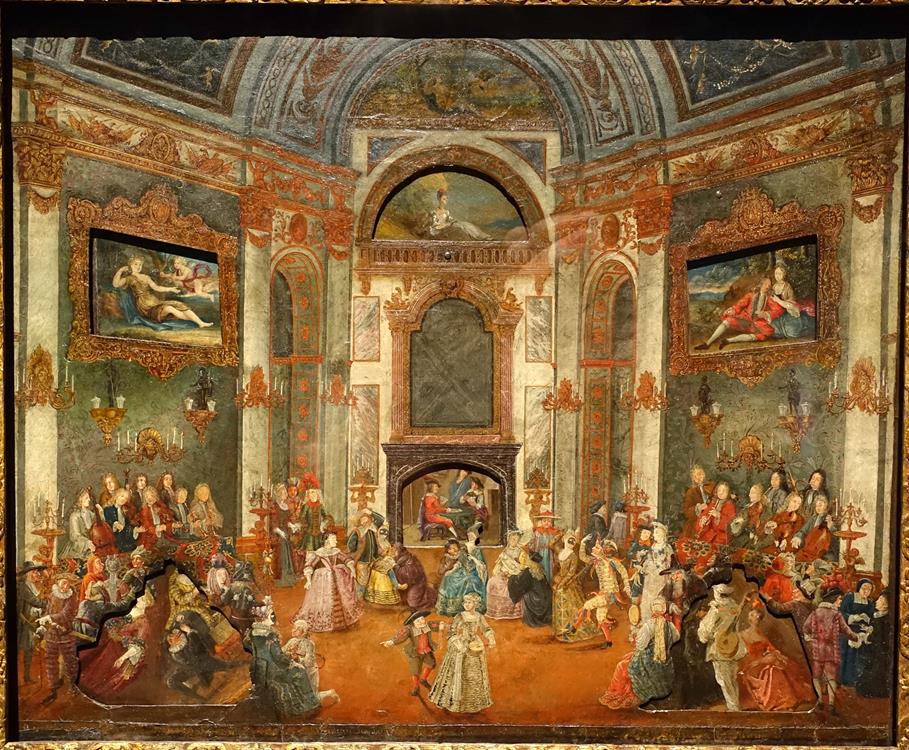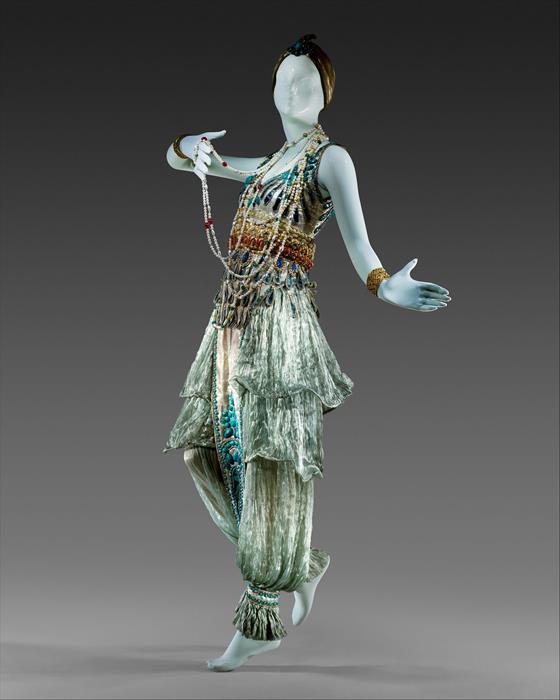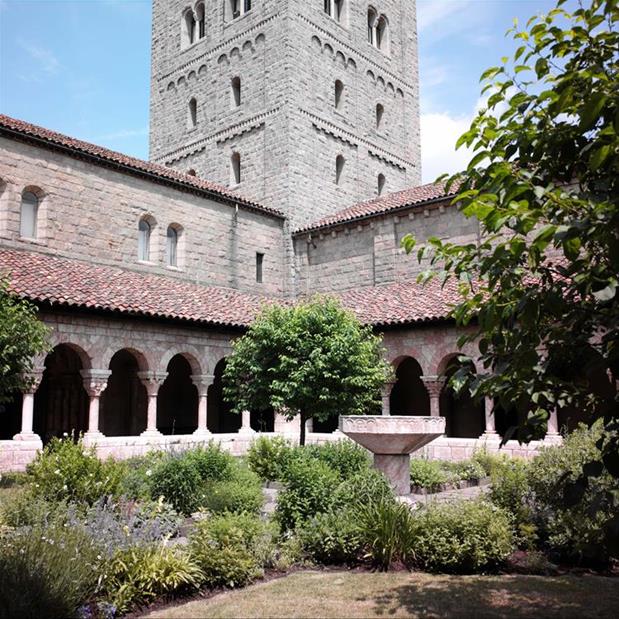In the heart of the bustling streets of New York City lies a treasure trove of art from all over the world – The Metropolitan Museum of Art. Affectionately known as ‘The Met,’ this iconic institution is the largest museum in the Americas and fourth-largest worldwide. As you step into its grand halls, prepare to be transported across continents and eras of history. Whether you’re a seasoned art enthusiast or a first-time visitor, The Met will captivate you with the artistic and architectural marvels it houses.
This iconic museum spans 2 million square feet and 300,000 years, which is enough to give you an idea about the sheer size, volume, and scope of the art and history you can see here. The Metropolitan Museum of Art stands alongside the Louvre in Paris and the British Museum in London as some of the most expansive and most impressive displays of humanity’s contribution to art.
An institution like this deserves a spot on your must-visit list in New York! However, this very reason may be overwhelming for some, especially those who are not well-versed in the arts. But fret not – this guide can help you get through The Met and enjoy your visit.
Opening Hours
Before anything else, make sure that The Met is open on the date you plan to visit. Note that the museum is open from 10 AM to 5 PM on Sundays to Tuesdays and Thursdays and from 10 AM to 9 PM on Fridays and Saturdays. Galleries are cleared 15 minutes before closing time.
The Met is closed every Wednesday, and also during Thanksgiving Day, December 25, January 1, and the first Monday in May.
Getting There
Venturing to The Metropolitan Museum of Art is an adventure in itself. There are many different ways that lead to its grand entrance. Whether you prefer the iconic yellow taxis, the efficiency of the subway, or a leisurely stroll through Central Park, getting to The Met is part of the New York experience.
The Met is at 1000 Fifth Avenue at 82nd Street, New York, and can be accessible by:
- Taxi – Ask to be dropped at the main entrance)
- Subway – Take the 4, 5, 6, or Q subway lines, and alight at 86th Street station. Take a short walk to The Met.
- Foot – When you’re at Central Park, simply follow the signs leading to The Met. Enjoy the scenic route, with The Met located on the eastern edge of the park.
- Car – If you choose to drive, you can do so, but be warned: availability of parking can be limited.
- Bicycle – For your convenience, there are bike lanes leading up to the museum.
Must-See Exhibits
The Metropolitan Museum of Art, as we mentioned earlier, is huge. There’s so much to see here, so if you’re planning to visit, make sure you’ve got some time to check out these exhibits:
The Egyptian Art Collection (Near the Great Hall)
From the entrance, turn right, and you can be led to a portal to ancient Egypt, with over 26,000 pieces that date back from the Paleolithic Period. The highlight is the Temple of Dendur, a majestic structure that sits within a vast, light-filled room, its reflection shimmering in a surrounding pool. The exhibit also features an array of mummies, sculptures, and artifacts, offering a comprehensive glimpse into Egyptian life and culture.
Greek and Roman Art (Near the Great Hall)
Turn left to wander into the ancient world of the Greeks and Romans with stunning sculptures, pottery, and artifacts. This exhibit showcases the richness of Greek and Roman culture and their influence on Western civilization. The sculptures and ruins displayed here date back to 4500 B.C.
The American Wing (Rear of the Museum)
Proceed straight from the entrance, and you’ll get to this extensive wing that showcases the diversity and history of American art. The famous painting, Washington Crossing the Delaware, is a centerpiece, surrounded by a rich collection of paintings, sculptures, and decorative arts.
The display also includes rooms reconstructed from historical American homes, offering an immersive historical experience. It features more than 20,000 pieces from Euro-American, Native American, African American, and Latin American artists dating back to the colonial period of the Americas.
Arms and Armor (1st Floor, Central)
The Arms and Armor Exhibit showcases the artistry and craftsmanship of historical warfare. It features an impressive array of armor, swords, and firearms, each piece telling its own story of combat and chivalry. The collection includes medieval European knights’ armor, exquisite Japanese samurai gear, and ornate ceremonial weapons that represent the Ancient Greece, Roman Empire, dynastic Egypt, and other cultures.
Modern and Contemporary Art (First and Second Floor)
Spread across the first and second floors, this area showcases the dynamism and diversity of 20th and 21st-century art. It’s a juxtaposition of styles and mediums, from abstract expressionism to contemporary installations. Highlights include works by Picasso, Pollock, and Warhol, offering insights into the profound changes in artistic expression during the modern era.
Arts of Africa, Oceania, and the Americas (First Floor)
Explore a diverse range of art from these continents in this area, displaying the cultural richness and artistic creativity of various societies. With over 11,000 pieces of artifacts and art like masks, accessories, and textile work, observers can get a better idea of the culture of ancient South America, Central America, Africa, and Oceania.
Asian Art (Second Floor)
The Asian Art department of the Met features over 35,000 pieces of Asian art, which holds over 4,000 years of history. It’s a vast collection representing the broad spectrum of Asian art and culture, featuring everything from ancient sculptures to contemporary pieces. Some of the most famous collections of the department include Indian sculptures, Chinese paintings and calligraphy, and Tibetan and Nepalese works.
Medieval Art (Ground Floor and First Floor)
In this area, you cancheck out the art and artifacts that reflect Europe’s diverse religious and social history during the Middle Ages.
European Paintings (Second Floor)
This section greets you with an array of vibrant and evocative works from the Renaissance through to the modern era. It’s a celebration of European artistry featuring masterpieces by Van Gogh, Rembrandt, and Vermeer, among others. The arrangement of the galleries invites you on a chronological journey, highlighting the evolution of European painting.
European Sculpture and Decorative Art (Ground Floor and First Floor)
This is an exquisite collection of European craftsmanship, from intricate decorative objects to life-size sculptures. It features works of famous sculptors like Bernini and Rodin.
The Costume Institute (Ground Floor)
The Costume Institute, supported by The Met’s star-studded annual gala, is a hub of fashion history and contemporary design. With temporary exhibits that celebrate influential fashion movements and designers, it’s a treasure trove for fashion enthusiasts. Alongside these rotating displays, the permanent collection, dating back to the 15th century, showcases a rich array of historic garments. This is a must-visit destination for anyone passionate about the evolution and art of fashion.
Exploring Beyond the Art
Besides the different kinds of art to admire at the exhibits, there are other splendors to see at the Met.
Architectural Grandeur
The Met itself is an architectural masterpiece, combining Beaux-Arts, neoclassical, and modern design elements. Its façade, a majestic view from Fifth Avenue, is crowned by a series of classical columns and steps leading up to its grand entrance. Inside, the Great Hall’s soaring ceilings and opulent décor set a tone of awe and elegance.
The Rooftop Garden
A hidden gem to tourists but well-known to locals, The Met’s rooftop garden offers both art and respite. Open in the warmer months, it features modern sculptures and provides panoramic views of Central Park and the Manhattan skyline, making it a perfect spot for contemplation and relaxation.
Astor Chinese Garden Court
For those looking for quieter corners, the Astor Chinese Garden Court, replicating a Ming Dynasty-style garden, is a peaceful retreat. It is the first permanent cultural exchange between China and the United States.
The Met Cloisters
The Met Cloisters, established in 1938 in Fort Tryon Park, serve as The Met’s branch dedicated to medieval European art. Housed in a structure designed to mirror a medieval cloister, it presents a stunning array of nearly 2,000 artworks, including tapestries, manuscripts, and stained glass.
The building was a gift from John D. Rockefeller Jr., and it merges various medieval architectural styles, creating an authentic yet unique setting. The surrounding gardens, true to medieval horticultural methods, and the breathtaking views of the Hudson River from Fort Tryon Park make it a serene, off-the-beaten-path treasure in Manhattan.
Dining Options
If you get hungry in the middle of your tour, don’t fret – there are several dining options inside the museum for your convenience. The Met offers a variety, from casual cafes to more formal restaurants, such as:
- American Wing Café: Offers light meals and snacks in a relaxed setting, ideal for a quick refreshment.
- The Eatery: Family-friendly, with a variety of choices, including sandwiches, salads, and desserts.
- The Great Hall Balcony Café and Bar: Elegant space for light snacks, sushi, banh mi sandwiches, and beverages overlooking the Great Hall.
- The Petrie Court Café and Wine Bar: Located in a spectacular gallery, this offers a more formal dining experience with views of Central Park, serving lunch and afternoon tea.
- Balcony Lounge: An exclusive space for Members and Patrons, offering a quiet spot to relax and enjoy light refreshments. Reservations are strongly recommended here.
- The Met Dining Room: Available for Members at the Patron level or above, this dining room serves elegant meals with stunning views of Central Park. This restaurant features a seasonal menu from chef Bill Telepan. Dinner here is served only on Fridays and Saturdays.
- Cantor Roof Garden Bar: A seasonal outdoor option at the rooftop that provides spectacular views of the city skyline, along with drinks and light bites.
If you run out of options or prefer to eat outside, thankfully, there are many eateries and restaurants just outside The Met that can cater to all tastes. From cozy coffee shops to upscale dining, the surrounding area is a culinary adventure waiting to be explored.
Other Amenities
- Bathrooms: Bathrooms are located throughout the museum for convenience.
- Gift Shops: The Met Store is a destination in itself, offering a wide array of souvenirs, art books, and replicas.
- Coat Check: Coat check is available for storing coats and larger items.
- Information Desks: Staff can assist with directions and information at the information desks.
- Membership Desk: There are also membership desks for inquiries and membership purchases.
- Rest Areas: Throughout the museum, there are several rest areas and benches, allowing visitors to pause and reflect amidst their art exploration.
Tips and Helpful Information for Visiting the Met
Here are some tips and helpful info that can be valuable so you can be better prepared for your visit:
- Best times to visit: Weekday mornings tend to be less crowded, and you may plan on these dates if you prefer a more serene experience. Late afternoons and weekends are busier but buzz with the energy of art enthusiasts.
- Ticketing information: Tickets can be purchased online or at the museum. Consider buying in advance to avoid long lines. General admission tickets are priced at $30 for adults, $22 for seniors, and $17 for students. For New York State residents and students from NY, NJ, and CT, pay-what-you-wish tickets are available. Tickets are free for members, patrons, and children under 12 years old.
- Membership: If you plan to visit multiple times, membership offers benefits such as unlimited admission, early access to exhibitions, and discounts in gift shops and restaurants.
- The Met’s mobile app: Before you visit, it’s best if you have downloaded the app on your phone – it’s a valuable tool for navigating the museum. It includes detailed maps, information about exhibits, audio guides, and even the ability to save favorite works of art to create a personalized tour.
- Guided tours and audio guides: The Met provides an array of guided tours covering various collections and themes. There are audio guides available in several languages that can offer a self-paced exploration.
- Dress code: There’s no dress code in The Met, but make sure what you wear isn’t going to disturb fellow visitors or put the art at risk. With over two million square feet to explore, comfortable footwear is a must. Dress in layers, as temperatures can vary throughout the museum.
- Accessibility: The museum is wheelchair accessible, with wheelchairs available on a first-come, first-served basis. Assistive listening devices and sign language interpretation are available upon request.
- Special exhibitions: Often, these limited-time exhibits offer unique and rare insights into specific artists, cultures, or historical periods. Checking the museum’s schedule ahead can ensure you don’t miss these gems.
- Coat check: Free up your hands and ease your exploration by leaving coats, umbrellas, and large bags at the coat check, especially during winter visits.
- Food and drinks: Although food and drinks are not allowed in the galleries, carrying a water bottle for use in designated areas can help you stay hydrated during your visit.
- Photography: Personal, non-flash photography is allowed in most galleries. Tripods and selfie sticks are not allowed, so it helps to bring a friend who can take your photos.
- Start your visit upstairs: The upper floors are often less crowded in the morning. Beginning your tour here can allow for a more peaceful experience before exploring the busier lower-level galleries.
- Plan breaks: There are numerous benches and rest spots throughout the museum. Taking breaks will help prevent fatigue and make your experience more enjoyable.
Nearby Attractions
Once you’re done with the tour of The Met, here are some other attractions you can visit at walking distance:
- Central Park: Just steps away, Central Park offers an oasis in the city. Enjoy the greenery, the Conservatory Garden, or a rowboat ride on the lake. Or simply rest and relax at one of the most famous parks in the world.
- Guggenheim Museum: If you’re still craving for more art after the Met, a short walk north can take you to the Guggenheim Museum – which can offer a totally different experience. The Guggenheim is renowned for its unique spiral architecture and impressive collection of modern art and contemporary works.
- American Museum of Natural History: Located across Central Park, this museum is a wonderland for those interested in science, history, and the natural world. It’s most famous for its collection of dinosaur fossils and the Millstein Hall of Ocean Life.
- Frick Collection: A bit south of The Met, the Frick Collection houses a prestigious array of European paintings and decorative arts in a luxurious mansion setting.
Conclusion
The Metropolitan Museum of Art is a great place to relive history and take on a unique adventure. With its vast array of art, historical artifacts, and cultural treasures, this iconic museum offers endless opportunities for exploration and inspiration. Whether you’re a first-time visitor or a frequent guest, The Met always has something new to discover. As we wrap it up, we hope that this guide helps you and encourages you to visit The Met soon!


